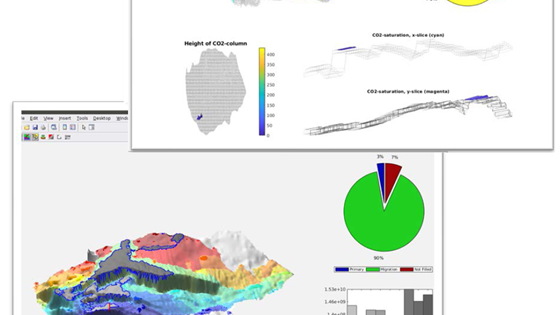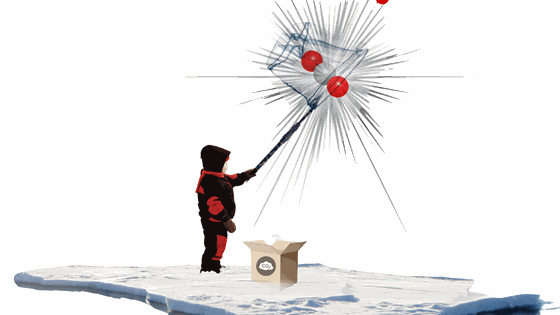
MRST-co2lab
MRST-co2lab offers a set of open-source simulators and workflow tools that have been specially designed for the study of long-term, large-scale storage of CO2.

We have since the early 2000 been active in research on the modelling and simulation of CO2 storage. In particular, we have developed specialized software for in-depth analysis of potential storage sites in terms of storage capacity, optimal use, and long-time containment. Our methods utilize mathematical formulations especially developed for modelling CO2-storage and are therefore able to produce better and more rapid results than existing 3D-simulators.

Methods we have developed are available in the in the public version of our open-source software MRST. Functionality for studying long-term trapping in large-scale saline aquifers can be found in MRST-co2lab, which offers an extensive set of features, including estimation of structural traps and spill-point analyses and forecasting of long-term migration through the use of vertical-equilibrium models. The software also offers several graphical user interfaces for interactive analysis of storage capacities, plume migration, and trapping. Some of these tools have later been published by MathWorks as the MATLAB Carbon Sequestration Model.
We have also researched more conventional simulation tools based on 3D black-oil or compositional modelling and developed hybridized methods that combine multilayered vertical-equilbrium models with localized 3D models. The latter are available in the hybrid-ve module of MRST.
More recently we have developed simulation capabilities to model carbon capture (e.g., direct air capture).

MRST-co2lab offers a set of open-source simulators and workflow tools that have been specially designed for the study of long-term, large-scale storage of CO2.

The Open Porous Media (OPM) initiative provides open-source software for simulation, upscaling and visualization of porous media processes, in particular subsurface reservoirs.

General purpose reservoir simulators created for oil and gas can be used for simulating CO2 storage scenarios. However, this can be cumbersome and requires significant expertise to perform correctly. The project improves on this by developing fit-for...

CO2 capture and storage (CCS) at scale will be critical for reducing the CO2 emissions and thereby reaching our climate targets. Sharing of reference datasets from pioneering CCS projects is essential to accelerate improved understanding, build...

NCCS will help Norway meet its obligations under the Paris Climate Agreement.

This project aimed to improve the measurement of in-situ geomechanical stress in deep subsurface geologic formations for CO2 storage. The objectives were to develop a method for estimating stress away from and between wells and demonstrate it in a...

The CO2-Upslope project focuses on studying the potential for migration-assisted CO2 storage in sloping, open aquifers. In such aquifers, there may be no single large trap, but CO2 is slowly migrating upwards in the aquifer, and gradually depleted by...

For CO2 capture and storage to play a relevant role in the reduction of European emissions, activities need to be scaled up significantly from what we are doing today. This will require good estimates on how much CO2 can be practically and safely...

The open-source numerical CO2 laboratory developed in MRST offers a flexible research and educational platform for modeling and simulation of geological storage of carbon dioxide. The laboratory constitutes of a large set of tools that simplify the...